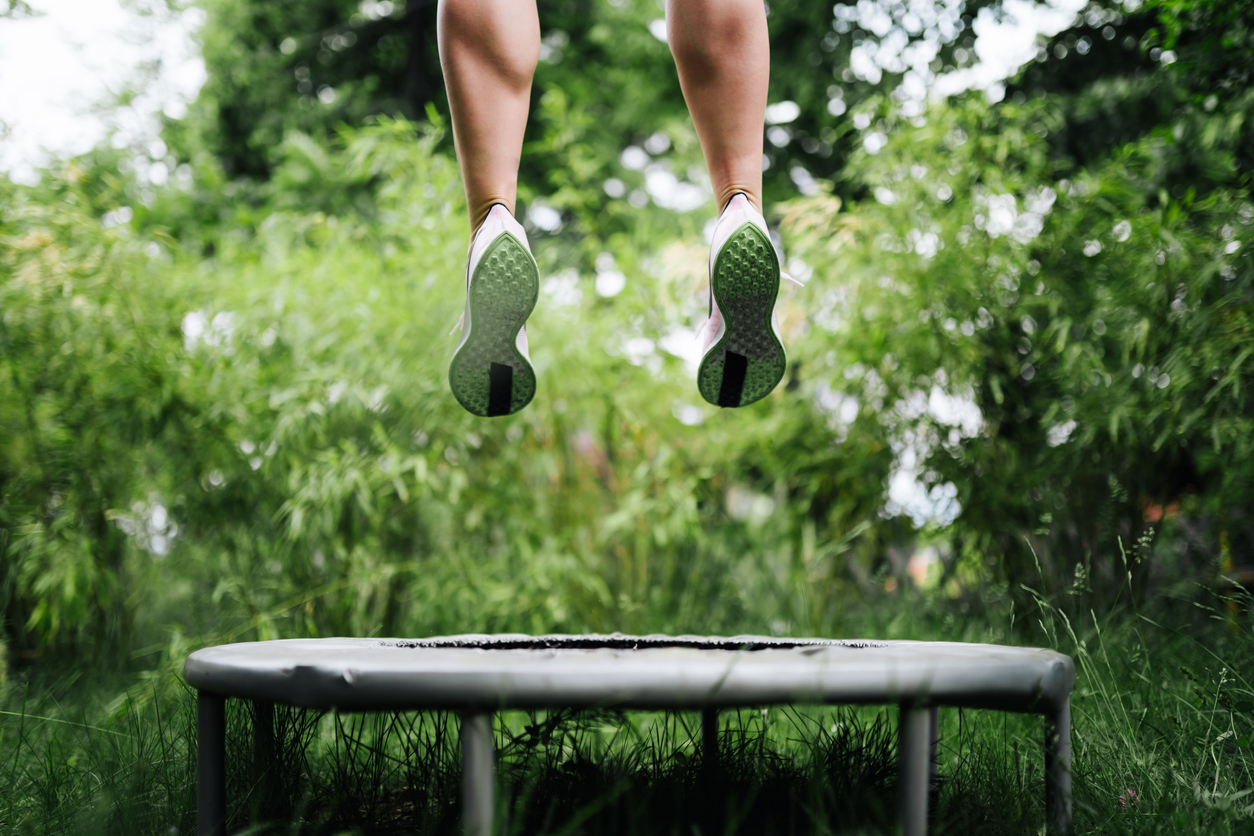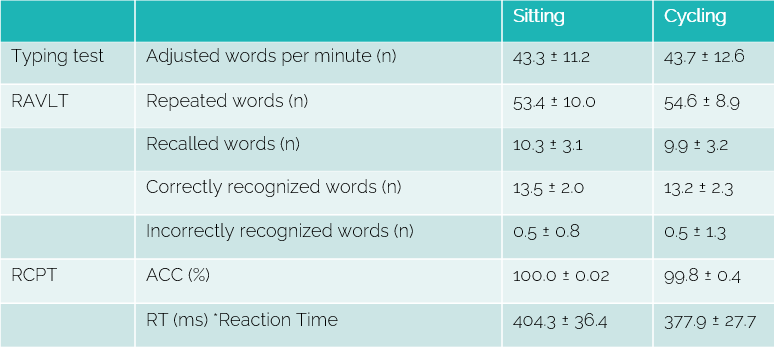I
I’m going to start this by saying . . . I hate cardio. I really, truly do. I get a rush out of resistance training–whether it’s setting new PRs or pumping out high-volume endurance sets, it always gets my blood pumping–but hours on a running track? An elliptical? No way! Of course, eschewing cardio entirely is risky. It’s important for both maintaining heart health and fitness, while also giving some extra caloric wiggle-room on your diet. I’ve tested out several ways to get some in my life without driving myself crazy, and one of my favorites is using an under the desk bike. I’ve been putting more wear and tear on my Desk Cycle lately, and that’s after wearing out several different models over the years.

Your desk. Not pictured: You getting cardio in during the work day
Here’s the basic problem: for many people, mindlessly walking/jogging/biking is boring. That makes exercise feel like a chore that needs to be tacked on after finishing work. While we all have to do a certain amount of drudgery, the more you can move needed activities into the category of what you like, the more willpower you’ll have available for everything else. There are tons of research into habit maintenance, and it shows that people who rely entirely on brute mental force drop out sooner or later. An all too easy example is New Year Resolutions. How many of your friends and family hit the ground running on Jan 2nd, then by March, if not February, are right back where they started? How about you? I’m not getting on my high horse here either; I’ve abandoned many a goal. I’ve learned that to make it consistent, I need to mix it into my life. Furthermore, something I can use in the workday would be even better.
Here’s a list of how I’ve tried to fit cardio in without driving myself crazy:
- Rebounders: these mini-trampolines were a big deal way back when, and I used to watch TV episodes bouncing up and down on them. Unfortunately, mine always seemed to break in a month or two, and there’s no way in hell I could get any work done while jumping up and down like a kangaroo. It was fun while it lasted, but I clearly needed something more practical
- Kindle on an elliptical: I’d go to the gym with a book loaded up and ready for consumption, put on my headphones, and read for as long as I could go. This does actually work; the issue is it requires me to schedule time to make the gym trip, which was too easy for me to defer. Also, it worked noticeably better with lighter fare; my concentration wasn’t quite there for more in-depth books. I remember going through the entirety of Neal Stephenson’s Seveneves on an elliptical and having to re-read paragraphs to understand the technical details.
- Seated elliptical under my desk: I bought a mini-elliptical that you could use either free-standing or in a seated position. The seated position works great on the couch, replacing the rebounder as a way to exercise while watching TV and/or playing video games that I use to this day. But it’s a pain to use for work. I had to raise my old desk up on cinder blocks to get enough clearance for my knees, and it was rough on my joints if I used it too long. I was able to get work done, though at a reduced efficiency, so I kept looking for better options.
Several years ago, I bought a standing desk and that made the seated elliptical much more practical…no more cinder block dust in my office! It still wasn’t ideal. So, I researched and settled on the Desk Cycle, which solved most of the remaining problems. It was easier on my joints, and I could work at full capacity.

A rebounder in action. Yes, they really are that small! They’re great for exercising while watching TV but are too herky jerky for working
Work Efficiency
The big question is, of course, “can you actually get any work done?” To which I say . . . yes! I’ve done long sessions coding, doing system administration, and writing prose while on it, and it’s absolutely viable. It’s not perfect, however, and has these pluses and minuses:
- While the pedaling is repetitive and mindless, it takes a piece of your coordination. This isn’t usually noticeable; however, if I get deep into a difficult task, I sometimes just stop moving. Without noticing. I then remind myself to resume exercising, so no big deal but worth noting. Also, I’ve played a number of video games on it, and it subtly impacts eye/hand coordination . . . I’d deliberately pause before attempting any tough platforming or a boss battle 🙂 Fortunately this isn’t a concern for the more slow-paced strategy and RPG genres.
- I get a beta-endorphin pick-up from the exercise, with all the usual benefits: better mood, greater sense of energy, etc. On off days where I’d rather just sit around and do nothing, that rush has helped make me productive. It’s also helpful anytime I’m taking a baseline day ([link https://www.adaptabledeveloper.com/the-importance-of-the-baseline-day/]) and want a natural enhancer without touching a nootropic. I particularly like it when skipping caffeine and still wanting to get pumped up for work.
- I’m less precise, with more typos in both code and writing. On the plus side, I work faster, and with more creativity. I always need to edit my work afterwards but appreciate what I come up with, as I’ve had some of my best ideas on the bike.
- Health benefits, as discussed above and below.
What about noise levels? The first under desk bike I tried made an annoyingly noticeable squeaky noise right after assembly, as it had traditional pedals. The modern crop uses magnets instead, which are nearly silent. It’s not perfect, however; I can well remember a time I was on a Skype call helping someone spot check some code and she commented on hearing something in the background. I stopped pedaling and she confirmed it went quiet. She just thought I had a fan nearby though; it wasn’t nearly loud enough to be a problem.
Real Cardio or Glorified Walking?
Now, clearly when I say pedaling during work, I don’t mean maxing out resistance level and pace to where your heart rate is hitting 75% of max. It’d be borderline impossible to get substantial work done when you’re out of breath. Plus, while you could pedal it to the max while in a chair, it’s just not as comfortable to go hard compared to using full-sized gym equipment.
Rather, view this as a tool to get your heart rate up to the low/middle end of the fat-burning zone. This won’t do your V02 max any favors, but it will get you the benefits of greater calorie burning and general exercise. If you’re already doing heavy resistance training, you should have enough between those two to cover your health needs. Otherwise–like if you plan on running a marathon anytime soon–use this to cover your baseline exercise needs and do some HIIT sessions on other days of the week for improving fitness markers.
A Little Scientific Corroboration
This wouldn’t be AdapaptableDeveloper if I didn’t at least skim through the available research. While I’m confident in my own experiences and what I’ve heard from other people using the same equipment, it’s always interesting to corroborate it with some studies. I found a decent number of them and picked a few worth examining. They both tackled the question of whether or not office workers can pedal while maintaining concentration and typing, with similar results.
The first, “Using a Desk-Compatible Recumbent Bike in an Office Workstation”, [1]Cho, Jay, Andris Freivalds, Liza Rovniak, Kiseok Sung, and Johanna Hatzell. “Using a Desk-Compatible Recumbent Bike in an Office Workstation.” Proceedings of the Human Factors and Ergonomics … Continue reading took a small group of 12 college students on all ends of the physical stature curve (in the 5th, 50th, and 95 percentiles of height and general size). In other words, they tested both the particularly large and small, with average represented right in the middle. Each participant had a custom-made desk with plenty of foot room, a nice chair, and the full ability to adjust ergonomics. And guess what the under the desk bike was? A Desk Cycle!
The subjects had to go over an article and then answer a multiple-choice quiz testing their reading comprehension. Plus, they took a typing test where they had to copy a different article. Finally, they estimated how mentally tough it was (the Borg RPE test). They were given three versions of these articles and tests, comparing their performance in 1) while sitting normally, 2) cycling slowly, 3) cycling briskly, and 4) cycling at whatever speed they liked.
The results were interesting. Their reading comprehension was largely unaffected, it didn’t matter if they were sitting still or pedaling briskly. Their typing performance, however, suffered especially when pedaling fast. This matches my own experiences: I don’t notice any loss in reading ability but have to look out more for typos, particularly when going hard.
Fun with Cognitive Tests
The next study, titled “Cycling on a Bike Desk Positively Influences Cognitive Performance,” [2]Torbeyns, Tine, Bas de Geus, Stephen Bailey, Kevin De Pauw, Lieselot Decroix, Jeroen Van Cutsem, and Romain Meeusen. “Cycling on a Bike Desk Positively Influences Cognitive Performance.” PLOS ONE … Continue reading continued hammering away at under-desk pedaling while trying a different battery of tests. They recruited a larger set of 23 participants, and required that each work a sedentary day job (IE software developer, accountant, etc.). They used a far larger—and more expensive—product model: the LifeSpan C3-DT5 Bike Desk.
They took a battery of cognitive tests, including a typing test, the Rey auditory verbal learning test (which checks short-term memory), the Stroop test (attention test), and the Rosvold continuous performance test (another attention test). Furthermore, they got hooked up to an EEG to watch their brain wave activity. Finally, they were tested when 1) sitting normally and 2) cycling at 30% of their max. That 30% pace is like what I was describing above, where you go fast enough to get a mild fat-burning zone feeling but nothing that gets you out of breath.
Results:
- Transcription test: their typing performance was about the same.
- Rey auditory verbal learning test: no significant differences.
- Stroop test: no significant difference in accuracy. For speed, however, the cyclers were slightly faster at an average of 639 ms versus 663 ms.
- Rosvold: again, no real difference in accuracy with slightly faster reaction times of 377 ms compared to 404 ms.

While I’m not about to bore you with the full study details, here are the exact results from a few of them showing how little impact cycling has on performance. Note the faster reaction times. This is pulled from Table 2 and is an exact reproduction, outside of me adding the start and note on what RT represents
The original study has a chart with all of the raw test values, which I considered reproducing here. It really is as they say, though, with almost identical results for each category. For example, the “Correctly recognized words” score of the Rey test had the sitters at 13.5 versus the cyclers at 13.2 words. The entire chart reads like that with negligible differences, so I’ll spare us both going through it.
Compared to my own experiences, this also makes sense. I had mentioned already that I’m faster when I work on a bike, though I lose some accuracy and precision. I suspect part of why they got different results is they used a larger, more stable bike than my own rig at home. Regardless though, it’s encouraging to see that research backs up what I and many other people have reported anecdotally.
Using tools like under-the-desk bikes is a time efficient way to get cardio in while working, with little to no risk of impeding your work. There’s a wide range of options, and while I’m partial to Desk Cycles, any of the major competitors should work. Getting a magnet-based one will be quiet enough for most any office environment. If you’re working a sedentary job, you should consider trying one out.
References
| ↑1 | Cho, Jay, Andris Freivalds, Liza Rovniak, Kiseok Sung, and Johanna Hatzell. “Using a Desk-Compatible Recumbent Bike in an Office Workstation.” Proceedings of the Human Factors and Ergonomics Society Annual Meeting 58, no. 1 (September 1, 2014): 1662–66. https://doi.org/10.1177/1541931214581347 |
|---|---|
| ↑2 | Torbeyns, Tine, Bas de Geus, Stephen Bailey, Kevin De Pauw, Lieselot Decroix, Jeroen Van Cutsem, and Romain Meeusen. “Cycling on a Bike Desk Positively Influences Cognitive Performance.” PLOS ONE 11, no. 11 (November 2, 2016): e0165510. https://doi.org/10.1371/journal.pone.0165510. |


